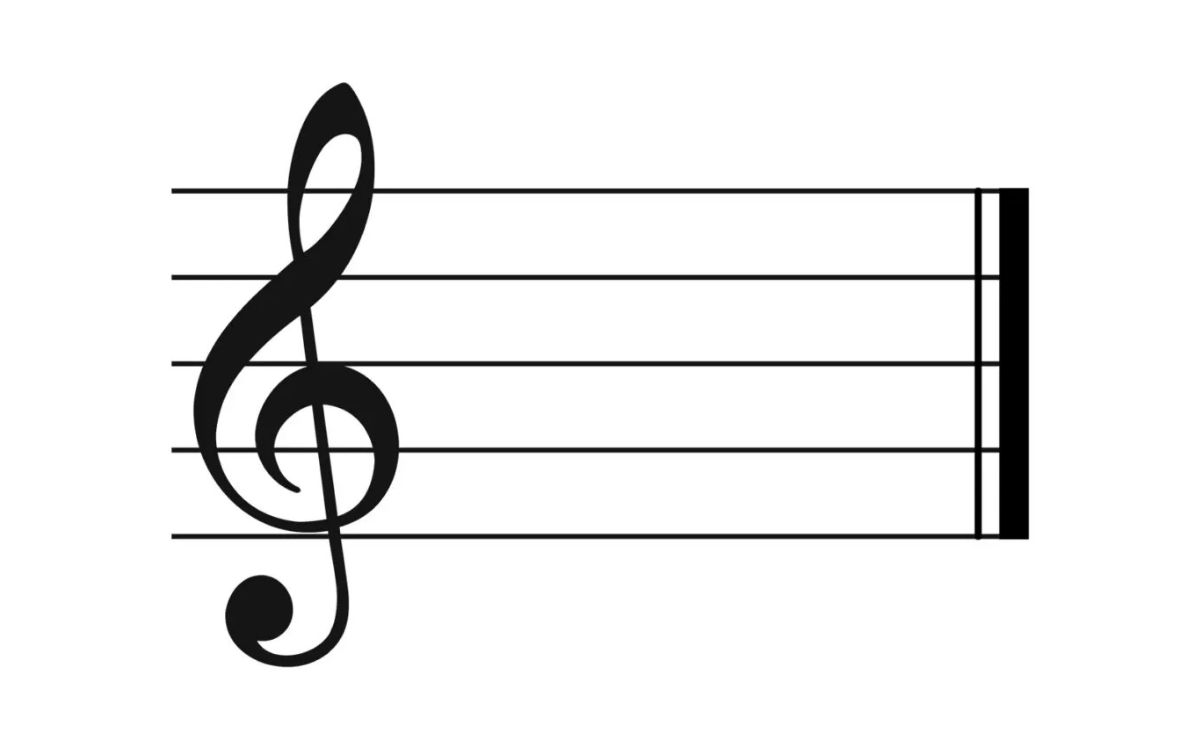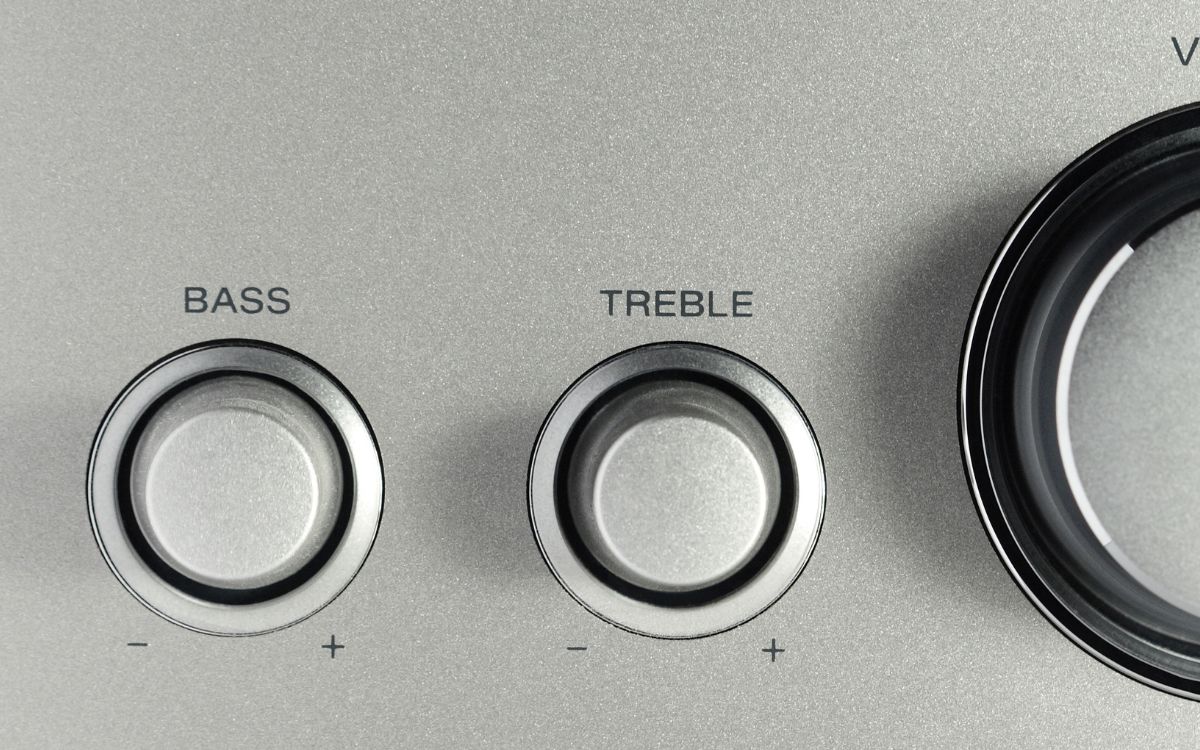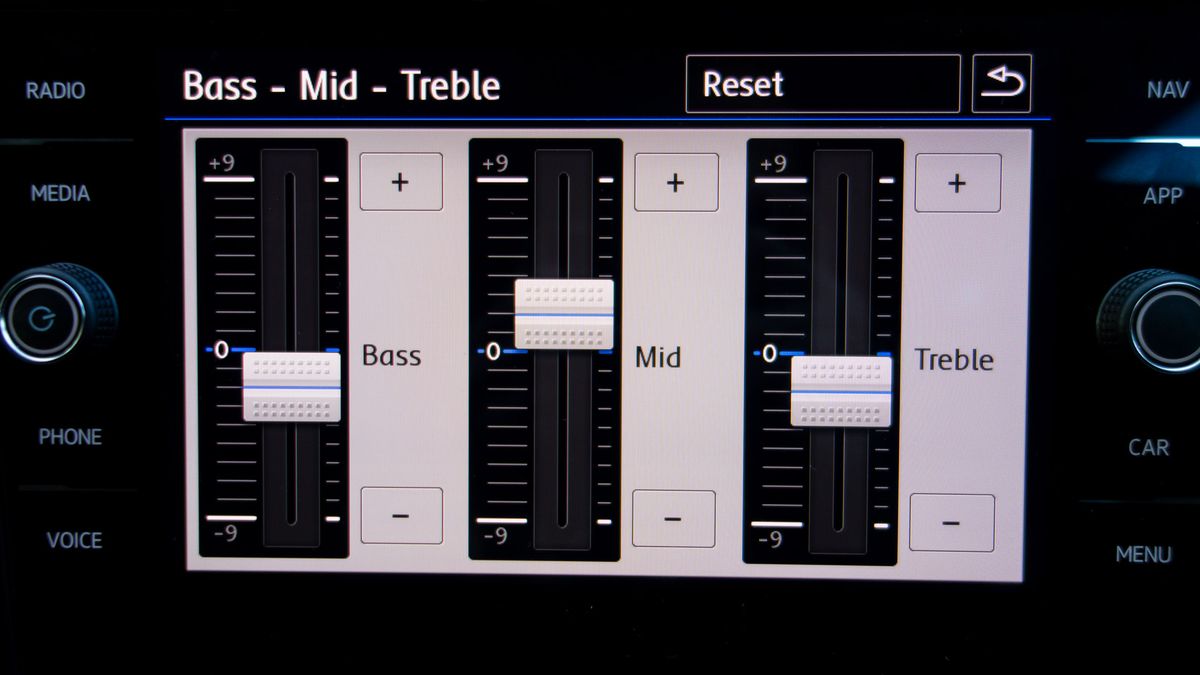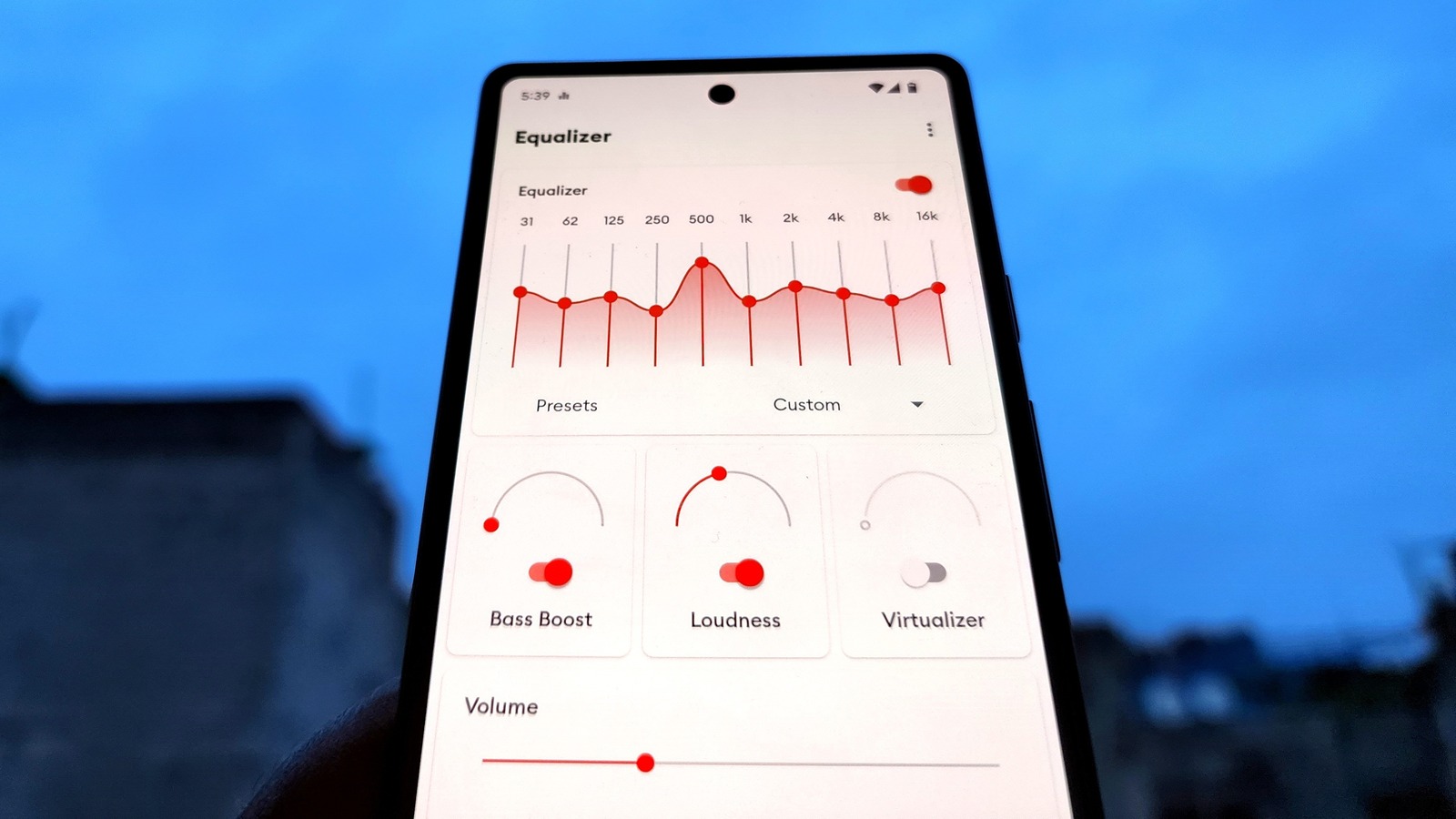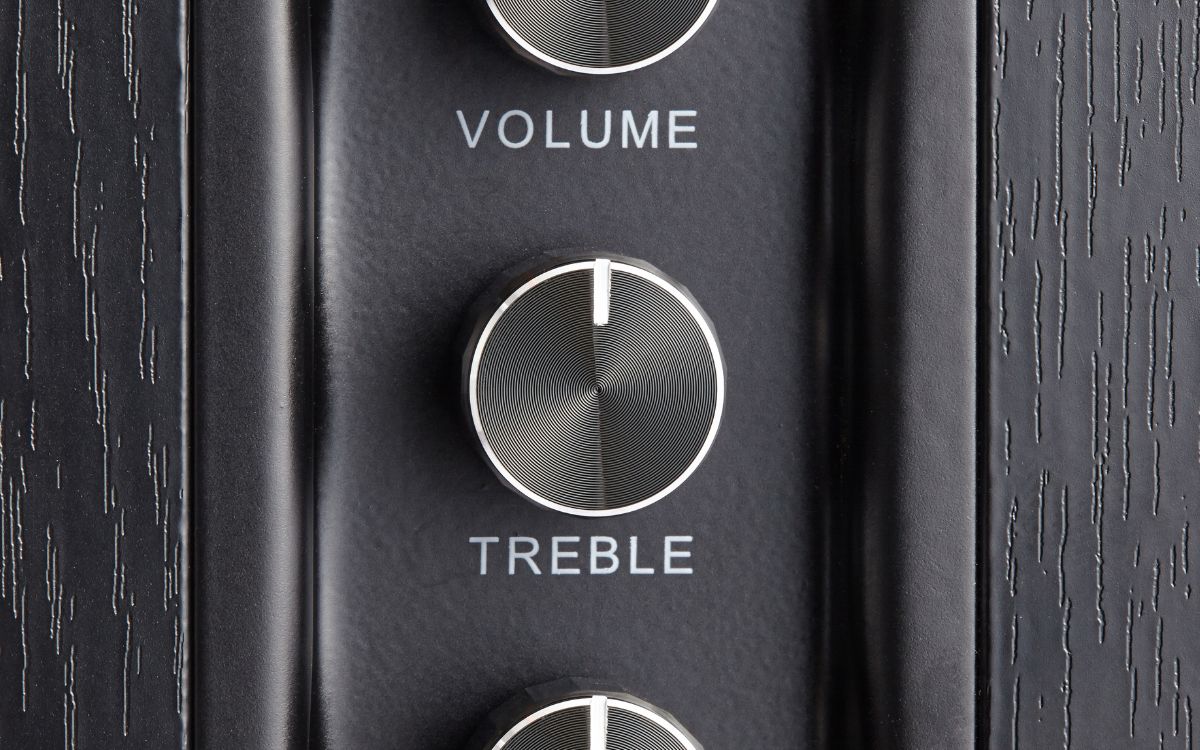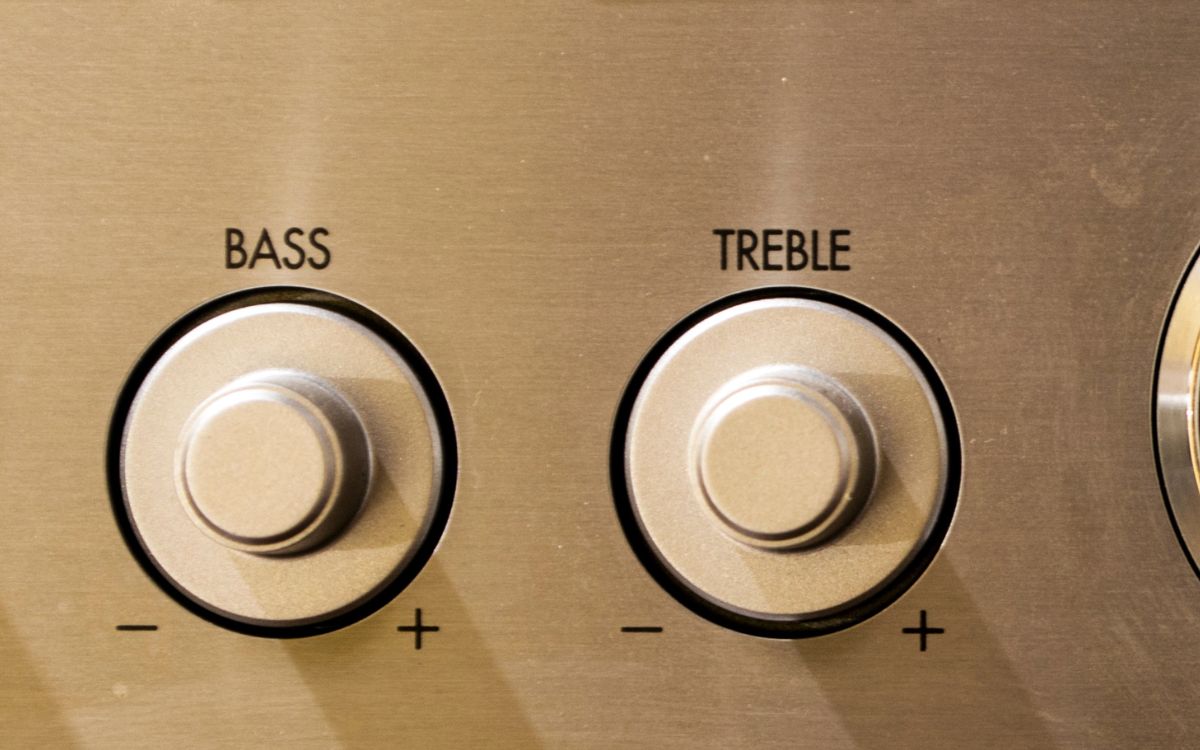Home>Production & Technology>Treble>How To Eq Treble Sound


Treble
How To Eq Treble Sound
Published: November 27, 2023
Learn how to EQ the treble sound with expert tips and techniques. Enhance your audio quality and achieve the perfect balance in your music.
(Many of the links in this article redirect to a specific reviewed product. Your purchase of these products through affiliate links helps to generate commission for AudioLover.com, at no extra cost. Learn more)
Table of Contents
Introduction
Welcome to the world of audio optimization! If you’re a music enthusiast or someone who wants to enhance the quality of sound in your audio system, understanding how to EQ treble sound is a valuable skill to acquire. EQ, which stands for equalization, is the process of adjusting specific frequency ranges to achieve a desired sound balance. While the bass and midrange frequencies provide the foundation and body of the sound, the treble frequencies add clarity, brightness, and sparkle.
In this article, we will dive deep into the intricate world of treble sound and explore the importance of EQ in achieving the perfect tonal balance. We will also discuss the step-by-step process of EQing treble sound, providing you with the knowledge to optimize your audio system.
Whether you’re an audio engineer, a music producer, or simply an avid listener, understanding the art of EQing treble sound is crucial for creating an immersive sound experience. By mastering the EQ settings for treble, you’ll be able to add definition and detail to vocals, instruments, and overall audio mixes.
So, let’s embark on this journey together and unravel the secrets of EQing treble sound for a captivating audio experience!
Understanding Treble Sound
Treble sound refers to the high-frequency range in audio signals. It encompasses frequencies between approximately 2,000 to 20,000 Hz, also known as the upper range of the audio spectrum. Treble is responsible for adding brightness, clarity, and airiness to the sound. It allows us to distinguish between different instruments, vocals, and sound effects within a mix.
Understanding treble frequencies is essential for optimizing audio quality. By identifying and adjusting the treble range, you can create a balanced and enjoyable listening experience. Too much treble can make the sound harsh and piercing, while too little can result in a dull and muffled sound.
It’s worth noting that the perception of treble varies from person to person. Factors such as age, hearing ability, and personal preferences can influence how we perceive high-frequency sounds. However, it’s important to strive for a treble balance that remains true to the source material while catering to our own listening preferences.
When dealing with treble sound, it’s also essential to understand the concept of frequency response. Every audio system, including speakers and headphones, has its own frequency response curve, which represents how it reproduces different frequencies. Some audio systems may emphasize or attenuate certain frequencies, including the treble range. Working with an accurate representation of the frequency response will help you make precise adjustments to the treble sound.
Now that we have a good understanding of what treble sound is and its importance in audio, let’s explore how EQ plays a crucial role in shaping treble frequencies to achieve the desired sonic balance.
Importance of EQ in Treble Adjustment
EQ, or equalization, is a powerful tool that allows us to manipulate the frequency balance of audio signals. When it comes to treble adjustment, EQ plays a vital role in achieving the desired tonal balance and enhancing the overall sound quality. Here are a few reasons why EQ is crucial in treble adjustment:
- Clarity and Definition: EQing the treble frequencies allows us to bring out the clarity and definition of instruments, vocals, and other audio elements. By precisely shaping the treble range, we can highlight specific details and make the sound more articulate.
- Balancing the Mix: The treble range contributes to the overall balance of a mix. With EQ, we can ensure that the treble frequencies are well-blended with the bass and midrange, creating a cohesive and harmonious sonic landscape.
- Avoiding Harshness or Muddiness: Improper treble balance can lead to harsh and piercing sounds or muffled and dull tones. EQ helps in taming excessive brightness or adding brightness to dull audio, preventing fatigue and enhancing the listening experience.
- Correcting Room Acoustics: Room acoustics can have a significant impact on treble frequencies. Due to reflections and resonances, certain frequencies can be amplified or attenuated. EQ lets us compensate for these room-induced imbalances and achieve more accurate and balanced treble reproduction.
- Personal Listening Preferences: EQ allows us to tailor the audio to our personal preferences. Whether you prefer a brighter or smoother treble sound, EQ empowers you to shape the tonal balance according to your liking and improve the overall enjoyment of the music.
It’s important to note that while EQ can greatly enhance the treble sound, it should be used judiciously. Over-EQing can introduce unnatural artifacts, distortions, or phase issues. It’s always recommended to make subtle adjustments and trust your ears as the final judge of the treble balance.
Now that we understand the significance of EQ in treble adjustment, let’s move on to the practical steps of EQing treble sound.
Steps to EQ Treble Sound
EQing treble sound requires a systematic approach to achieve the desired tonal balance and enhance the overall audio quality. Here are the steps to effectively EQ treble sound:
- Identify the Frequency Range: Start by identifying the exact range of the treble frequencies you want to adjust. This can vary depending on the audio source and personal preferences. Generally, the treble range lies between 2,000 to 20,000 Hz, but you may need to focus on a narrower range based on your specific needs.
- Use a Graphic Equalizer or Parametric EQ: To EQ treble sound, you can use either a graphic equalizer or a parametric EQ. A graphic equalizer offers preset frequency bands with fixed level adjustments, whereas a parametric EQ provides more flexibility by allowing you to control specific frequencies and adjust the bandwidth (Q) of each band.
- Start with Flat EQ: Reset or flatten all EQ settings to create a neutral starting point. This allows you to hear the true characteristics of the audio before making any adjustments.
- Listen and Analyze: Play audio material that represents the type of sound you want to enhance. Listen carefully to identify any deficiencies or excessive brightness in the treble range. Pay attention to clarity, detail, and overall tonal balance.
- Cut or Boost: Based on your analysis, make subtle adjustments to the treble frequencies by cutting or boosting specific bands. If the treble is too harsh or piercing, reduce the level of the offending frequencies. Conversely, if the treble lacks definition or brightness, gently boost the desired frequencies to add sparkle.
- Use Narrow Q for Precision: When making adjustments, it’s often helpful to use a narrow bandwidth (Q) setting to target specific problem frequencies. This allows for precise control and minimizes the impact on neighboring frequencies.
- A/B Comparison: Compare the audio with the EQ adjustments to the flat, unprocessed sound. Evaluate whether the treble enhancement is helping to achieve the desired tonal balance and overall quality. Make further adjustments as necessary.
- Reference Tracks: Use reference tracks that are well-mixed and mastered to compare the quality and balance of treble sound. This can serve as a guidepost for achieving a professional-sounding treble reproduction.
- Trust Your Ears: Ultimately, it’s essential to trust your ears throughout the EQ process. Remember that each audio source and listening environment is unique, so use your judgment to fine-tune the treble frequencies until you achieve the desired results.
By following these steps, you’ll be able to effectively EQ the treble sound and unlock the full potential of your audio system.
Choosing the Right EQ Settings
Choosing the right EQ settings for treble adjustment is essential to achieve the desired tonal balance and optimize the sound quality. Here are some tips to help you make informed decisions when selecting EQ settings:
- Understand the Frequency Spectrum: Familiarize yourself with the frequency spectrum and the specific characteristics of the treble range. This knowledge will guide you in selecting the appropriate frequency bands for adjustment.
- Consider the Source Material: Different audio sources may have varying levels of treble content. For example, vocals may require a different EQ treatment compared to a cymbal-heavy drum track. Take into account the nature of the sound and adjust the EQ accordingly.
- Start with Mild Adjustments: Avoid making drastic EQ changes right from the beginning. Start with mild adjustments and listen for the impact on the treble. Subtle changes are often more effective in achieving a natural and balanced sound.
- Use a Gentle Slope: When making cuts or boosts in the treble range, opt for a gentle slope rather than a steep one. This helps to maintain a smooth transition between adjacent frequencies, preventing unnatural sounding artifacts.
- Consider the Overall Mix: Take into account how the treble adjustment will fit within the context of the entire audio mix. Pay attention to the interaction between the treble frequencies and the bass and midrange. Ensure that the overall tonal balance remains cohesive and pleasing to the ear.
- Trust Your Ears: While guidelines and presets can be helpful, ultimately, trust your ears to make the final judgment. Each audio system and listening environment is unique, so rely on your hearing to determine if the EQ settings are achieving the desired treble balance.
- Experiment and Iterate: Don’t be afraid to experiment with different EQ settings. Make incremental adjustments and listen to how each change affects the treble sound. Be patient and willing to iterate until you find the settings that best suit your preferences and the audio material.
- Use Reference Tracks: Utilize well-mixed and mastered reference tracks to compare your EQ settings. A/B comparison with professional tracks can help you gauge the quality and balance of your treble adjustment, allowing you to refine your settings further.
- Document Your Settings: Once you achieve a satisfactory treble balance, consider documenting your EQ settings for future reference. This can be especially helpful if you work with multiple audio sources or want to replicate the same sound across different systems.
Remember, selecting the right EQ settings for treble adjustment is subjective and depends on personal preference, the audio material, and the listening context. Take the time to experiment and fine-tune your approach to find the settings that best suit your needs.
Common Mistakes to Avoid
When EQing treble sound, it’s important to be aware of common mistakes that can negatively impact the overall quality of the audio. By avoiding these pitfalls, you’ll be able to achieve a more balanced and natural treble reproduction. Here are some common mistakes to steer clear of:
- Over-boosting or Cutting: One of the most common mistakes is over-boosting or cutting frequencies in the treble range. Excessive boosting can result in an artificial or harsh sound, while excessive cutting can make the audio dull and lacking in detail. Make subtle adjustments and trust your ears to guide you.
- Using One-Size-Fits-All Settings: Every audio source and environment is unique, so using the same EQ settings for every situation is a mistake. Avoid relying on one-size-fits-all presets or settings and instead adapt your approach based on the characteristics of the audio material and your listening environment.
- Ignoring the Rest of the Frequency Spectrum: While treble adjustment is important, it’s crucial not to neglect the rest of the frequency spectrum. Consider the interaction between the treble, midrange, and bass frequencies and strive for a balanced tonal response across the entire range.
- Not Considering the Listening Environment: The acoustics of your listening environment can have a significant impact on how you perceive treble frequencies. Failing to account for the room’s characteristics can lead to improper EQ adjustments. Listen to your audio in different environments and adjust accordingly if necessary.
- Ignoring the Quality of the Audio Source: The quality of the audio source significantly affects the outcome of treble adjustment. If the source material is poorly recorded or low in quality, no amount of EQ tweaking can fully compensate. Therefore, it’s important to start with high-quality recordings whenever possible.
- Not Learning the EQ Tools and Controls: EQ can be a complex tool, especially when using parametric EQs with adjustable frequency bands and Q settings. Failing to understand how each control affects the treble sound can lead to ineffective adjustments. Take the time to learn and master the EQ tools you’re using.
- Ignoring the Role of Other Factors: Treble adjustment is just one aspect of achieving optimum sound quality. Other factors such as proper gain staging, audio compression, and mastering also play crucial roles. Consider the holistic approach to audio processing instead of relying solely on EQ adjustments.
By avoiding these common mistakes, you can ensure that your treble adjustments are effective and result in an improved audio experience. Remember to exercise patience, trust your ears, and strive for a balanced and natural sound.
Tips for Achieving Desired Treble Sound
When it comes to achieving the desired treble sound, there are several tips and techniques that can help you achieve optimal results. Here are some valuable tips to consider:
- Start with a High-Quality Source: Begin with high-quality audio recordings to ensure the best starting point for your treble adjustments. Well-recorded material provides a solid foundation for achieving a desirable treble balance.
- Use Reference Tracks: Use professionally mixed and mastered reference tracks to benchmark the quality and balance of your treble sound. Comparing your audio to reference tracks can provide insight and inspiration for achieving exceptional treble reproduction.
- Consider Multiple Listening Environments: Listen to your audio in various environments, including different rooms, headphones, and speakers. This allows you to evaluate how your treble adjustments translate across different listening scenarios and make necessary refinements.
- Take Breaks: Listening fatigue can impact your judgment and perception of treble balance. Take breaks during the EQ process to rest your ears, allowing you to come back with fresh ears and make more accurate adjustments.
- Adjust in Small Increments: Make subtle adjustments to the treble frequencies in small increments. Gradual changes allow for a more fine-tuned and natural-sounding result, preventing unintended harshness or dullness.
- Consider the Genre and Style of Music: Different genres and musical styles may have different treble characteristics. Consider the genre you’re working with and adjust the treble sound accordingly to enhance the specific elements and nuances of that style.
- Utilize a Spectrum Analyzer: A spectrum analyzer can provide valuable visual feedback on the frequency content of your audio. It helps identify areas that may require adjustments, allowing for a more precise approach to treble EQing.
- Don’t Rely Solely on EQ: While EQ is a powerful tool, remember that treble adjustment is not solely about EQ settings. Make sure to consider other factors like microphone placement, instrument selection, and proper gain staging to achieve the desired treble sound.
- Take Note of Room Acoustics: Be aware of the impact of room acoustics on treble frequencies. Address any acoustic issues like excessive reflections or resonances that can affect the perception of treble sound in your listening environment.
Remember, achieving the desired treble sound is a subjective process that requires experimentation and a keen ear. Embrace these tips to guide you in your quest for a well-balanced and pleasing treble reproduction.
Conclusion
EQing treble sound is a skill that can significantly enhance the audio experience. By understanding the importance of treble adjustment and utilizing proper EQ techniques, you can achieve a balanced and captivating treble reproduction.
We started by understanding what treble sound is and its role in the audio spectrum. We explored the significance of EQ in shaping treble frequencies to achieve clarity, definition, and tonal balance. We learned the step-by-step process of EQing treble sound, from identifying the frequency range to making precise adjustments.
Choosing the right EQ settings and avoiding common mistakes are crucial aspects of successful treble adjustment. We discussed the importance of understanding the frequency spectrum, considering the source material and listening environment, and trusting our ears to guide us during the EQ process.
Finally, we shared valuable tips for achieving the desired treble sound, including using high-quality recordings, referencing professional tracks, considering multiple listening environments, and making subtle adjustments in small increments.
Remember, achieving the perfect treble balance is an ongoing learning process that requires practice, experimentation, and a keen ear. Embrace the knowledge and techniques shared in this article, and let your passion for audio optimization guide you to a treble sound that elevates your listening experience.
So, go ahead and dive into the world of EQing treble sound. Discover the creative possibilities, shape the audio to your preferences, and unlock the full potential of your audio system.

